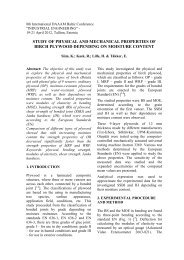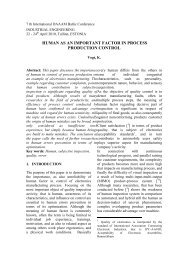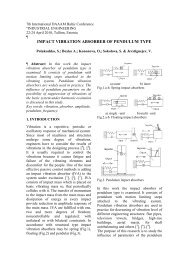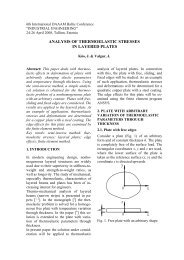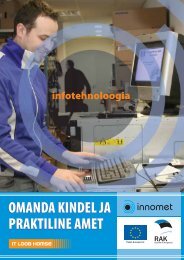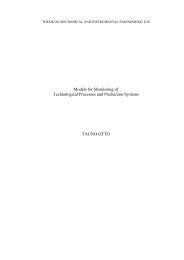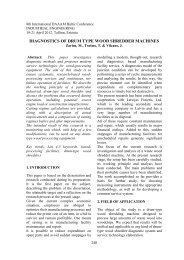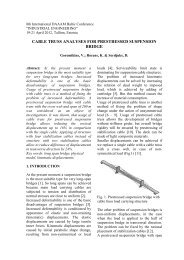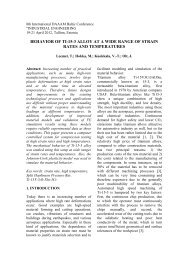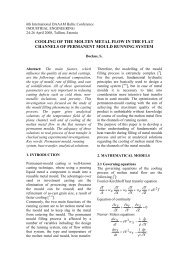Surface Roughness Produced by Hard Turning With Pcbn Tools
Surface Roughness Produced by Hard Turning With Pcbn Tools
Surface Roughness Produced by Hard Turning With Pcbn Tools
You also want an ePaper? Increase the reach of your titles
YUMPU automatically turns print PDFs into web optimized ePapers that Google loves.
Fig. 3. Machined surface roughness profile<br />
Comparing proportions of heights of the<br />
unevenness with length of the basic shape<br />
of unevenness - 5 µm of height to 150 µm<br />
of length of the feed rate - it can be noticed<br />
that it is a tiny, almost flat part of the<br />
wedge, which is printed on the surface and<br />
which remains unchanged for a long time –<br />
despite change of the wedge’s geometry of<br />
the main flank and rake face.<br />
Fig. 4. Machined surface roughness and waviness<br />
profiles and parameters<br />
Analysis of roughness profiles created <strong>by</strong><br />
CB20 and 7020 cutting tools makes<br />
observation of differences (Fig.4). The initial<br />
phase of cutting is very similar; parameters<br />
are almost identical. The lesser change of<br />
cutting tool geometry influenced the surface<br />
roughness profile. Rt parameter increased<br />
nearly 1µm so that the averaged value for the<br />
whole profile is equal to 5.27µm.<br />
Analysis of surface waviness profile<br />
demonstrates significant differences for all<br />
the parameters. Differences in this case<br />
take from the difficulties in cutting with<br />
negative rake angle and large and<br />
developed cutting edge.<br />
3.4. <strong>Surface</strong> roughness analysis – 3D<br />
Analysis of topography displayed in Figure<br />
5 demonstrates for both of the cases very<br />
smooth surface. The ridges after the tool<br />
pass are almost identical. The range of<br />
height is approximate, though it is smaller<br />
for the surface shaped <strong>by</strong> the coated wedge.<br />
The differences are barely noticeable for<br />
most of the amplitude, area & volume, and<br />
spatial parameters. Therefore, their<br />
description is omitted.<br />
Observation of the contour maps of the<br />
surface and then the layout of the unevenness<br />
shows visible differences. Concentration of<br />
lines and points on the contour map is<br />
different. Greater randomness of the surface<br />
is visible especially in case of surface created<br />
<strong>by</strong> uncoated wedge where cutting edge is<br />
more developed. To describe the visible<br />
differences more thoroughly several<br />
parameters was chosen (Fig.5).<br />
Mean material volume ratio (Smmr) was<br />
selected as the first parameter. It is a<br />
parameter describing the total volume of<br />
material of the surface obtained <strong>by</strong><br />
measuring the space between an imaginary<br />
horizontal plane at the minimum altitude of<br />
the surface and the points of the surface.<br />
The higher value of Smmr for CB20 cutting<br />
tool material (>3µm 3 /µm 2 ) indicates that in<br />
this case the material volume will be<br />
subjected to higher wear.<br />
Density of summits (Sds), and root-meansquare<br />
slope (Sdq) were selected for the<br />
reason that they are able to describe the



